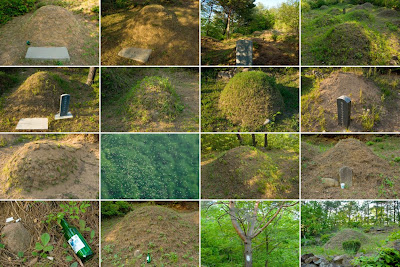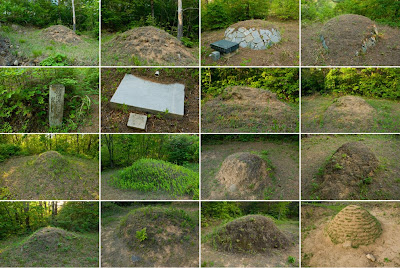
A couple of times, about a month back, I believe to celebrate the advent of spring, the administration decided that the entire student and teacher population of my school should do a short hike in the mountains behind the school grounds. I noticed several off shoots from the main trail, and so the other day after work I decided to explore them. I walked off the path into a more heavily forested area of tiered hills interspersed with clearings, and found myself in a cemetery, of sorts. There were a series of small burial mounds, and they extended everywhere and in every direction. I got lost among them. This wasn't a cemetery in the maintained or organized sense, it was more like what you would find in the Appalachian Mountains: a random series of clearings that families made to preserve in dirt and stone their own sense of memory and their history. I started making photographs, and then I couldn't figure out which way was out, and realized I kept circling about and finding the same grouping of mounds that I had found earlier. Here's three grids of images I put together in chronological order from left to right and top to bottom, so you can get an idea of my movement through the space. And above is a song from the African Pearls compilation featuring music from Senegal.
I was researching burial traditions in Korea a little bit and here's what I found:
The eldest son of the family is the one responsible for preparing and cleaning the burial mounds of the most recently deceased ancestor. The corpse is traditionally buried standing upright and should either face south or toward an important spiritual part of the landscape. Many times, they are set to face mountains, since mountains are said to be the homes of the spirits of the land and the sky. The coffin is made from six planks of wood. Four of the planks represent the four cardinal points on the compass. The fifth one is for heaven and the last one for earth.
"fresh chestnuts gathered from the forests are cut into jewel-like shapes, for easy stacking. Stacking things, whether stones or food, is a form of prayer."



No comments:
Post a Comment